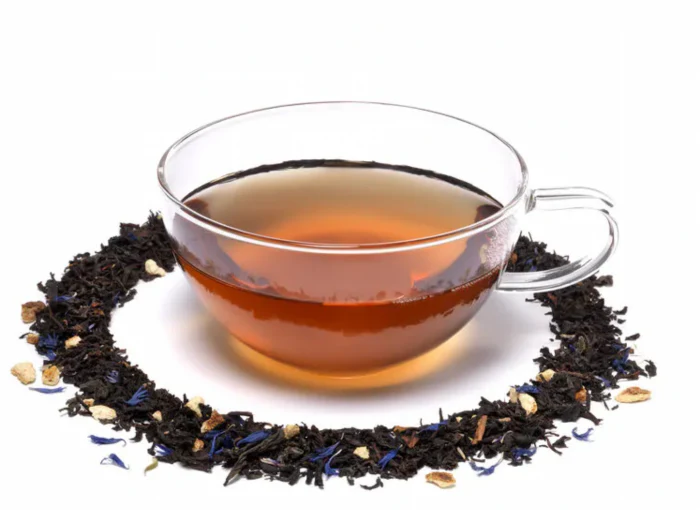Introduction
Earl Grey tea is one of the world’s most celebrated flavored teas, known for its distinctive blend of black tea and bergamot oil, which imparts a unique citrus aroma and flavor. Despite its global popularity, the origins of Earl Grey tea are shrouded in a blend of history, legend, and speculation. This post delves into the fascinating story behind Earl Grey tea, examining its historical roots and the man whose name it bears.
Who Was Earl Grey?
- Charles Grey, 2nd Earl Grey (1764–1845): The tea is named after Charles Grey, a British statesman who served as Prime Minister from 1830 to 1834. His tenure was marked by significant reforms, including the abolition of slavery in the British Empire and the passage of the Reform Act 1832, which reformed the electoral system.
Legends and Theories Surrounding the Tea’s Origin
- The Chinese Mandarin Legend
- Rescue and Gratitude: A popular legend suggests that a Chinese mandarin’s son was saved from drowning by one of Earl Grey’s men during a diplomatic mission.
- Gift of Tea: In gratitude, the mandarin presented Earl Grey with a special blend of black tea scented with bergamot oil.
- Historical Doubts: Historians often dispute this story since Earl Grey never traveled to China, and direct trade between China and Britain was limited to the East India Company’s dealings at the time.
- Water Quality at Howick Hall
- Lime-Contaminated Water: Another theory posits that the water at Howick Hall, Earl Grey’s family estate in Northumberland, was high in lime content, affecting the taste of the tea.
- Bergamot as a Flavor Enhancer: Bergamot oil was added to counteract the unpleasant taste, leading to the creation of the unique blend.
- Lady Grey’s Influence: Lady Grey reportedly used this blend while entertaining in London, where it became popular and prompted tea merchants to replicate it.
- The Role of Tea Merchants
- Twinings’ Claim: The British tea company Twinings asserts that they crafted the blend at Earl Grey’s request to suit the water at Howick Hall.
- Jacksons of Piccadilly: Another tea merchant, Jacksons of Piccadilly, also claimed to have received the original recipe from Earl Grey in 1830.
Bergamot Oil and Its Significance
- What Is Bergamot?
- Citrus Fruit: Bergamot is a fragrant citrus fruit (Citrus bergamia) primarily grown in the Calabria region of southern Italy.
- Essential Oil: The oil extracted from the peel is highly aromatic and used in perfumery, aromatherapy, and flavoring.
- Why Add It to Tea?
- Flavor Profile: Bergamot oil adds a refreshing citrus note to the robust character of black tea, creating a balanced and distinctive flavor.
- Preservation: Some historical accounts suggest that bergamot was initially used to preserve the tea during long voyages.
Development and Popularity
- Commercialization
- Twinings: Began selling Earl Grey tea in the 19th century and continues to be one of the most recognized brands offering this blend.
- Spread Across Europe: The tea gained popularity in Britain and eventually across Europe, becoming synonymous with sophistication and refined taste.
- Variations
- Lady Grey Tea: A lighter version that includes additional citrus peels like lemon and orange. Created by Twinings in the 1990s to cater to Nordic tastes.
- Different Base Teas: While traditionally made with black tea, some variations use green, oolong, or even herbal teas as a base.
Cultural Impact
- In Literature and Media
- References in Pop Culture: Earl Grey tea has been mentioned in various books, films, and television shows.
- Captain Jean-Luc Picard: The character from “Star Trek: The Next Generation” famously orders “Tea, Earl Grey, hot,” contributing to the tea’s modern-day fame.
- Symbol of Elegance
- Afternoon Tea Staple: Often associated with British afternoon tea rituals, symbolizing elegance and tradition.
- Global Appreciation: Enjoyed worldwide, it’s a testament to the blend’s enduring appeal.
Controversies and Myths
- Authenticity of the Origin Story
- Lack of Documentation: There is no definitive historical record confirming any single origin story.
- Marketing Strategies: Some theories suggest that the legends were embellished or created by tea companies to add mystique and drive sales.
- Trademark Disputes
- Generic Term: “Earl Grey” has become a generic term for any black tea flavored with bergamot, leading to debates over branding and proprietary recipes.
Conclusion
The true origin of Earl Grey tea may remain a blend of fact and folklore, but its legacy is unquestionable. Named after a prominent British Prime Minister, the tea reflects a fusion of cultural influences and historical narratives. Whether it was born out of a diplomatic gift, a solution to water quality issues, or the ingenuity of tea merchants, Earl Grey tea continues to captivate the senses with its aromatic bergamot essence and rich black tea base. Its storied past adds to the enjoyment of each cup, inviting tea lovers to savor not just the flavor but also the intriguing history steeped within.
References
- Historical records from the UK Parliament archives on Charles Grey’s tenure.
- Twinings and Jacksons of Piccadilly company histories.
- Studies on the use of bergamot in flavoring and preservation.
